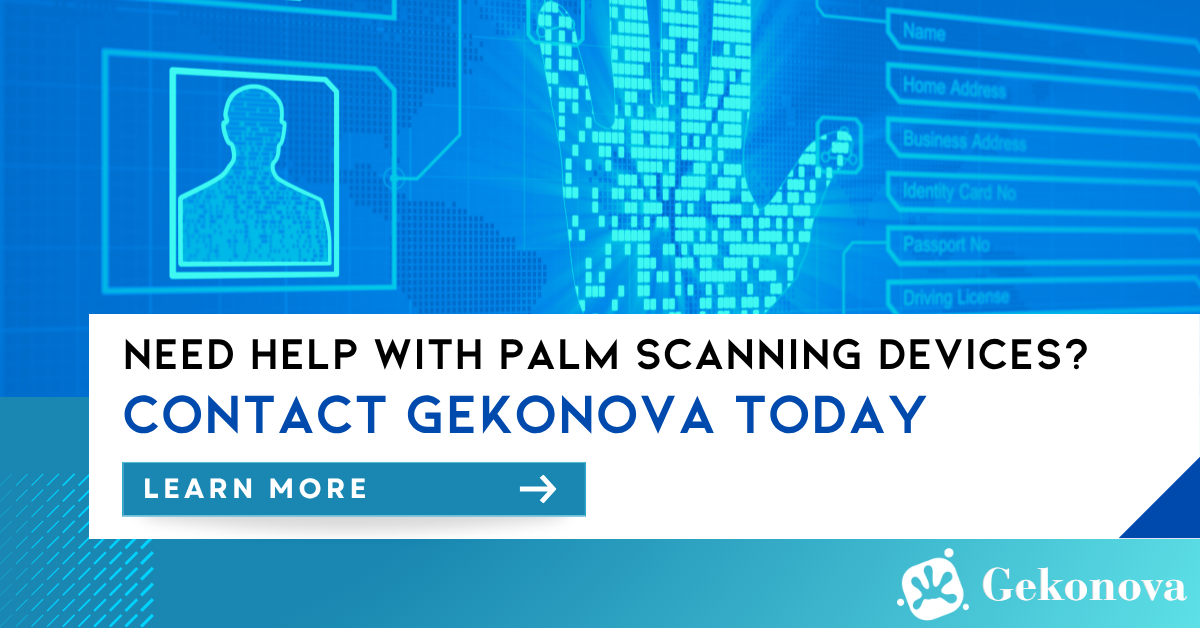Categories
Palm vein authentication leverages near-infrared light to map unique vein patterns beneath the skin, providing a secure, contactless biometric solution for identity verification. Despite its reliability, palm vein can occasionally produce false rejections—when authorized users are incorrectly denied access—can disrupt workflows and erode confidence in the system.
This guide delves into the causes of palm vein false rejections and offers actionable strategies to enhance accuracy, ensuring seamless authentication for applications like secure access or employee verification.

Palm vein false rejections occur when a scanner fails to match a user’s vein pattern to their stored template, resulting in denied access. Measured as the False Rejection Rate (FRR), these errors can stem from environmental, user, or technical factors. Addressing false rejections requires a comprehensive approach to optimize both the system and user experience, minimizing disruptions and maintaining trust.
A palm vein scanner uses near-infrared light to capture the deoxygenated hemoglobin in a user’s veins, creating a unique digital template for authentication. The system compares live scans against stored templates, relying on high-quality imaging and robust algorithms. While vein patterns are highly distinctive, factors like poor scan quality or inconsistent user interaction can trigger palm vein false rejections.
Understanding the root causes of false rejections is essential for improving system performance. These issues can be grouped into environmental, user-related, technical, and database-related factors, each contributing to authentication failures.
External conditions can interfere with the scanner’s ability to capture clear vein images, increasing palm vein false rejections.
Ambient light, especially from sunlight or infrared-emitting sources, can distort vein pattern capture. For example, a scanner near a bright window may produce inconsistent scans, leading to rejections.
Cold environments can constrict blood vessels, reducing vein visibility and altering patterns. This is common in outdoor settings or unheated facilities, where low temperatures impact scan accuracy.
User behavior significantly affects scan success, with errors often arising from inexperience or physiological variations.
Misaligned, tilted, or improperly distanced palms can result in low-quality scans. For instance, placing the hand too far from the sensor may obscure vein details, triggering false rejections.
Temporary changes like dehydration, swelling, or minor injuries can subtly alter vein patterns, causing mismatches. For example, dehydration after exercise may reduce vein prominence, leading to authentication failures.
Hardware and software constraints can contribute to false rejections, particularly in outdated or poorly configured systems.
Lower-quality scanners may struggle to capture clear images, especially for users with less distinct vein patterns, such as those with thicker skin. This can result in frequent rejections.
Matching algorithms set to high sensitivity may reject scans with minor deviations, prioritizing security over usability and increasing palm vein false rejections.
The quality and maintenance of the biometric database directly impact authentication success.
Subtle changes in vein patterns due to weight changes or aging can cause mismatches if templates aren’t updated, leading to palm vein false rejections.
Poor initial scans, often from rushed enrollment or suboptimal conditions, create unreliable templates that hinder accurate matching.
Minimizing false rejections requires addressing environmental, user, technical, and database factors through targeted strategies. These best practices enhance scanner accuracy and user satisfaction.
A controlled environment is critical for reducing palm vein false rejections and ensuring consistent scan quality.
Effective user training reduces errors caused by improper interaction, lowering palm vein false rejections.

Investing in advanced technology can significantly reduce palm vein false rejections.
High-quality enrollment and proactive template maintenance are key to minimizing palm vein false rejections.
Conduct Robust Enrollment:
Update Templates Periodically:
Verify Template Quality:
Ongoing monitoring helps identify and address issues before they escalate, reducing palm vein false rejections.
For organizations aiming to further enhance performance, advanced methods can significantly reduce false rejections.
Train AI algorithms to adapt to subtle vein pattern variations, improving recognition despite physiological changes.
Implement algorithms that adjust matching criteria based on user history or environmental factors, optimizing accuracy.
Ensure scanners verify live tissue, reducing errors from spoofing attempts that could indirectly affect FRR.
Reducing palm vein false rejections is essential for delivering a seamless, trustworthy biometric authentication experience. By optimizing the scanning environment, enhancing user training, upgrading technology, maintaining high-quality templates, and proactively monitoring performance, organizations can minimize errors and boost system reliability. Advanced techniques like machine learning and dynamic thresholds further elevate accuracy, ensuring palm vein technology meets the demands of secure, efficient authentication in 2025 and beyond.